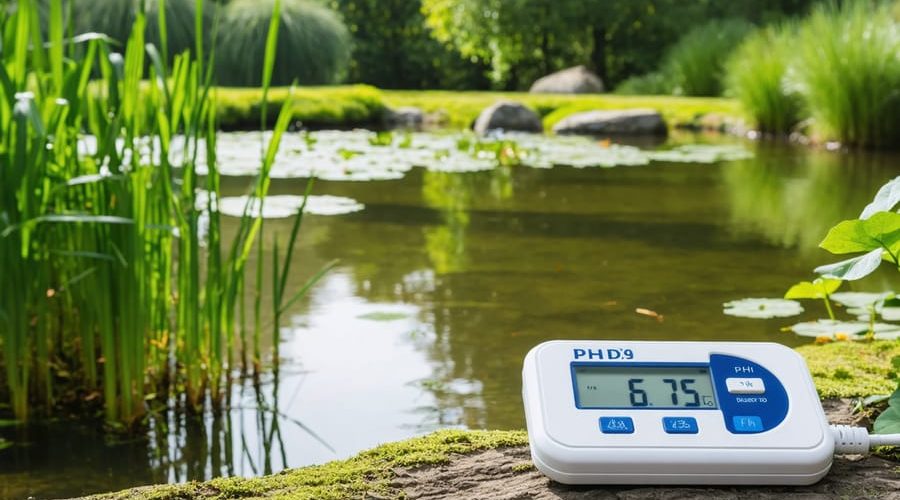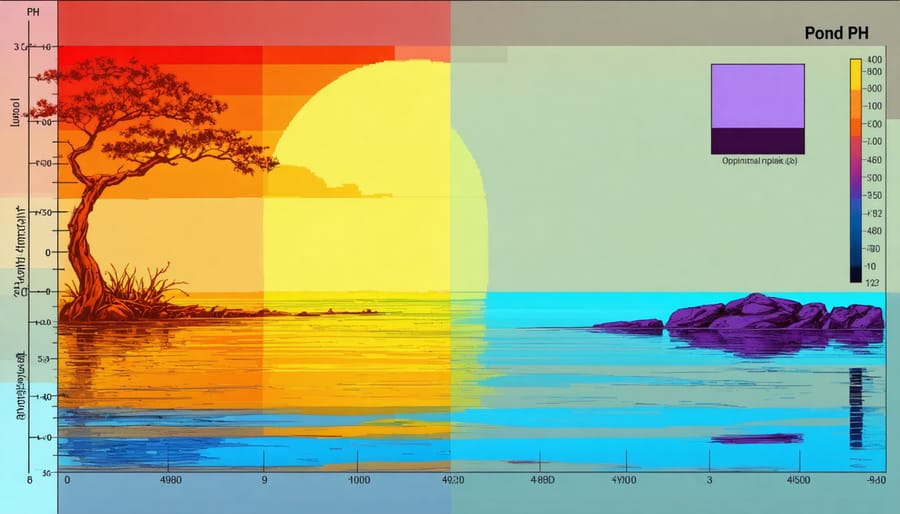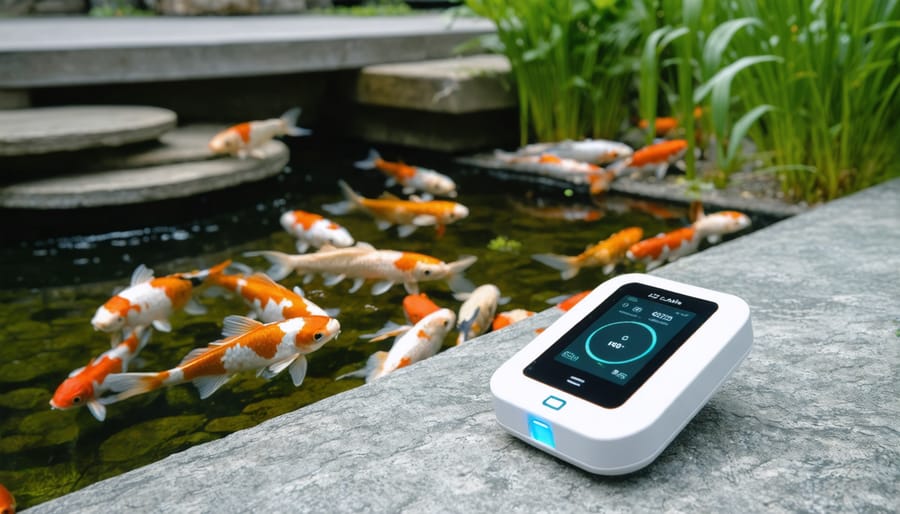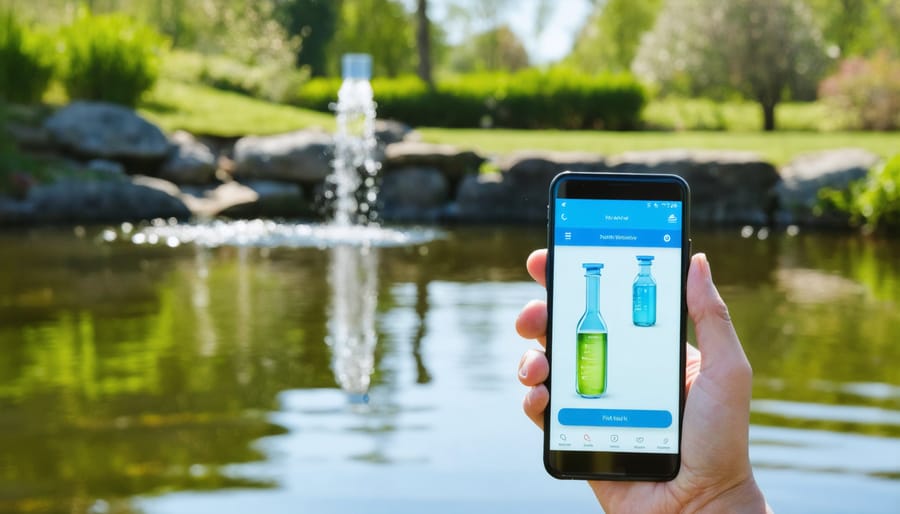
Smart Water pH: The Secret to Perfect Pond Balance
Maintaining the perfect pH level in your crystal clear water feature isn’t just about numbers—it’s crucial for creating a thriving aquatic ecosystem. Smart water pH technology revolutionizes how we monitor and maintain water quality, offering real-time measurements that typically range between 6.5 and 8.5 for optimal results. Unlike traditional testing methods, smart pH monitoring systems provide continuous readings and automatic adjustments, ensuring your water stays perfectly balanced without constant manual intervention. Whether you’re a seasoned pond enthusiast or just starting your water gardening journey, understanding smart water pH levels helps create a healthier environment for aquatic life while reducing maintenance time and effort. Modern smart monitors can alert you instantly when pH levels drift outside the ideal range, allowing for quick corrections before problems develop.
Understanding Smart Water pH Levels

Optimal pH Ranges for Different Water Features
Different water features require specific pH ranges to maintain their beauty and support aquatic life. For koi ponds, the ideal pH range is between 7.0 and 8.6, with 7.4 being the sweet spot. This slightly alkaline environment helps koi thrive and keeps their vibrant colors bright. If you notice your fish becoming less active or their colors fading, it might be time to check your pond’s pH.
Water gardens with various aquatic plants typically do best with a pH between 6.5 and 7.5. This range supports most water lilies, lotus, and marginal plants while preventing algae overgrowth. Some plants, like bog plants, prefer slightly more acidic conditions around 6.0-6.5, so it’s worth researching the specific needs of your plant collection.
Decorative fountains and water features without plants or fish can operate safely within a broader pH range of 6.5 to 8.2. However, maintaining a neutral pH around 7.0 helps prevent scale buildup and extends the life of your pumps and equipment. This is especially important for fountains with intricate details or natural stone features that could be affected by extremely acidic or alkaline water.
Remember that pH levels can fluctuate throughout the day due to factors like temperature, rainfall, and biological activity. Regular monitoring helps you catch changes early and maintain optimal conditions for your specific water feature.
How Smart Technology Monitors pH
Modern smart monitoring systems have revolutionized how we keep track of pond water pH levels. Gone are the days of manually testing water with chemical strips – today’s technology does the heavy lifting for us!
These clever devices use specialized sensors that stay submerged in your pond water, continuously measuring pH levels in real-time. The sensors work by detecting the concentration of hydrogen ions in the water, which determines its acidity or alkalinity. This information is then transmitted to a digital display or, even better, straight to your smartphone through a dedicated app.
Many smart pH monitors come with helpful features like instant alerts when pH levels drift outside your set range. Imagine getting a notification while you’re at work that your pond’s pH is climbing too high – this early warning system helps you address issues before they affect your fish or plants.
The best part about these systems is their user-friendly nature. Most come with color-coded readings and simple-to-understand graphs that track pH changes over time. This makes it easy to spot patterns and understand how factors like rainfall or feeding schedules might impact your water’s pH balance.
Some advanced models even integrate with automatic dosing systems, adding the right amount of pH adjusters to maintain perfect levels without any manual intervention. It’s like having a knowledgeable pond keeper on duty 24/7!

Maintaining the Perfect pH Balance
Automated pH Control Systems
Modern technology has made maintaining perfect pH levels easier than ever with automated pH control systems. These smart devices continuously monitor your water’s pH and make automatic adjustments when needed. Think of them as tiny chemists working 24/7 to keep your pond’s chemistry balanced!
A typical automated system includes pH sensors, a control unit, and dosing pumps that can add either acid or base solutions as needed. When the sensors detect pH levels drifting outside your set range, the system springs into action, carefully adding the right amount of chemicals to bring things back into balance.
These systems are especially helpful for busy pond owners or those who travel frequently. You can even find models that connect to your smartphone, allowing you to monitor pH levels remotely and receive alerts if something needs attention.
While automated systems can be a bit pricey upfront, they often pay for themselves by preventing pH-related problems and reducing the time you spend on manual testing and adjustments. Plus, they help maintain more stable conditions for your fish and plants, leading to a healthier pond ecosystem overall.

Common pH Problems and Smart Solutions
Common pH fluctuations can be frustrating, but smart technology makes monitoring and fixing these issues easier than ever. If your pond’s pH reading is consistently high (above 8.0), this often indicates excess algae growth or mineral buildup. Smart monitoring systems can alert you before these problems become severe, allowing you to implement natural water treatment solutions promptly.
Low pH readings (below 6.5) might signal decomposing organic matter or acid rain influence. Smart pH controllers can automatically trigger aerators or activate treatment systems when levels drop too low. Some advanced systems even integrate with your smartphone, sending real-time alerts and suggesting specific actions based on your pond’s conditions.
To prevent sudden pH swings, smart monitoring devices can track patterns over time, helping you identify potential issues before they affect your pond life. Many systems now include features like automated dosing pumps that can gradually adjust pH levels, maintaining stability without the need for constant manual intervention.
Smart pH Monitoring Best Practices
To get the most out of your smart pH monitoring system, start by placing your sensor in a spot with good water flow, away from direct sunlight and feeding areas. This ensures more accurate readings and longer sensor life. Set up alerts on your smartphone app to notify you when pH levels drift outside your target range – this way, you’ll catch issues before they become problems.
Check your sensor’s calibration monthly using standard calibration solutions. Even smart sensors need occasional adjustment to maintain accuracy. Clean the probe gently with a soft brush every few weeks to prevent biofilm buildup, which can affect readings.
Make it a habit to review your pH data trends weekly. Most smart monitoring systems store historical data, which can help you spot patterns and predict potential issues. For example, you might notice pH tends to rise after heavy rains or during algae blooms.
Create a maintenance schedule in your monitoring app and stick to it. Document any adjustments you make to water chemistry, along with weather conditions and other factors that might affect pH. This information becomes invaluable for troubleshooting future issues.
Consider setting up automated responses through your smart system, such as triggering a pump to add pH adjusters when levels drift. However, always double-check readings with a manual test kit before making major adjustments – it’s good to have a backup verification method.
Remember to replace sensor probes according to manufacturer recommendations, typically every 12-18 months, to maintain reliable monitoring.
Maintaining the right pH level in your water feature is crucial for the health of your aquatic ecosystem, and smart monitoring technology makes this task easier than ever. By implementing smart pH monitoring systems, you can receive real-time updates and automated alerts when your water’s pH levels need attention. Remember that the ideal pH range of 6.5-7.5 provides the perfect environment for most pond life to thrive. Regular monitoring, combined with proper adjustments when needed, will help create a balanced and beautiful water garden. Whether you’re a beginner or experienced pond keeper, smart pH monitoring technology can take the guesswork out of water maintenance and give you peace of mind knowing your pond is in optimal condition. Start implementing these smart solutions today, and watch your water garden flourish with healthy, happy plants and fish.
